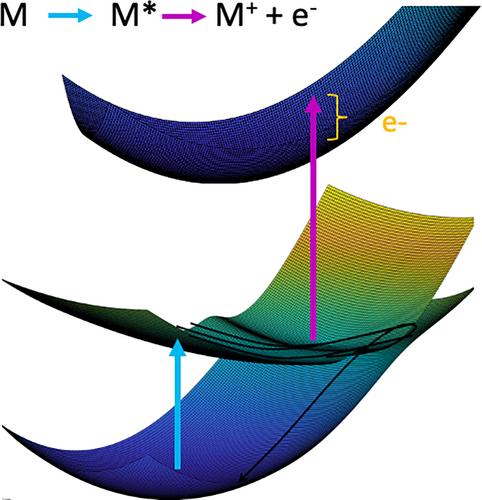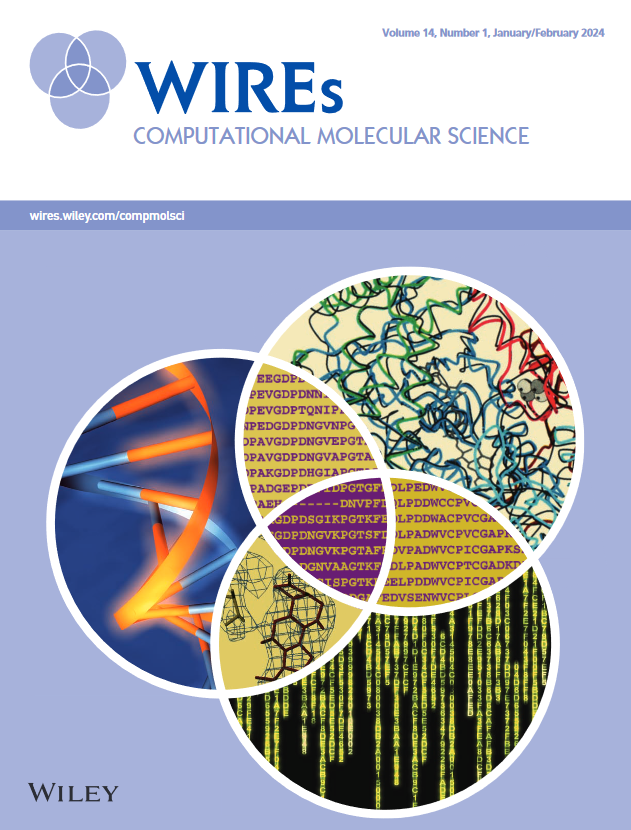通过轨迹表面跳变实现时间分辨光电子能谱学
IF 27
2区 化学
Q1 CHEMISTRY, MULTIDISCIPLINARY
Wiley Interdisciplinary Reviews: Computational Molecular Science
Pub Date : 2024-05-09
DOI:10.1002/wcms.1715
引用次数: 0
摘要
时间分辨光电子能谱是一种强大的泵探技术,可以探测分子中的非绝热动力学。然而,对实验信号的解释需要理论模拟的输入。电子结构理论、非绝热动力学和电离产率计算理论方面的进步,使得时间分辨光电子能谱的精确模拟成为可能,并成功应用于该技术。我们回顾了计算时间分辨光电子能谱所涉及的基本理论和步骤,并重点介绍了成功的应用:本文章由计算机程序翻译,如有差异,请以英文原文为准。

Time-resolved photoelectron spectroscopy via trajectory surface hopping
Time-resolved photoelectron spectroscopy is a powerful pump-probe technique which can probe nonadiabatic dynamics in molecules. Interpretation of the experimental signals however requires input from theoretical simulations. Advances in electronic structure theory, nonadiabatic dynamics, and theory to calculate the ionization yields, have enabled accurate simulation of time-resolved photoelectron spectra leading to successful applications of the technique. We review the basic theory and steps involved in calculating time-resolved photoelectron spectra, and highlight successful applications.
This article is categorized under:
求助全文
通过发布文献求助,成功后即可免费获取论文全文。
去求助
来源期刊

Wiley Interdisciplinary Reviews: Computational Molecular Science
CHEMISTRY, MULTIDISCIPLINARY-MATHEMATICAL & COMPUTATIONAL BIOLOGY
CiteScore
28.90
自引率
1.80%
发文量
52
审稿时长
6-12 weeks
期刊介绍:
Computational molecular sciences harness the power of rigorous chemical and physical theories, employing computer-based modeling, specialized hardware, software development, algorithm design, and database management to explore and illuminate every facet of molecular sciences. These interdisciplinary approaches form a bridge between chemistry, biology, and materials sciences, establishing connections with adjacent application-driven fields in both chemistry and biology. WIREs Computational Molecular Science stands as a platform to comprehensively review and spotlight research from these dynamic and interconnected fields.
 求助内容:
求助内容: 应助结果提醒方式:
应助结果提醒方式:


